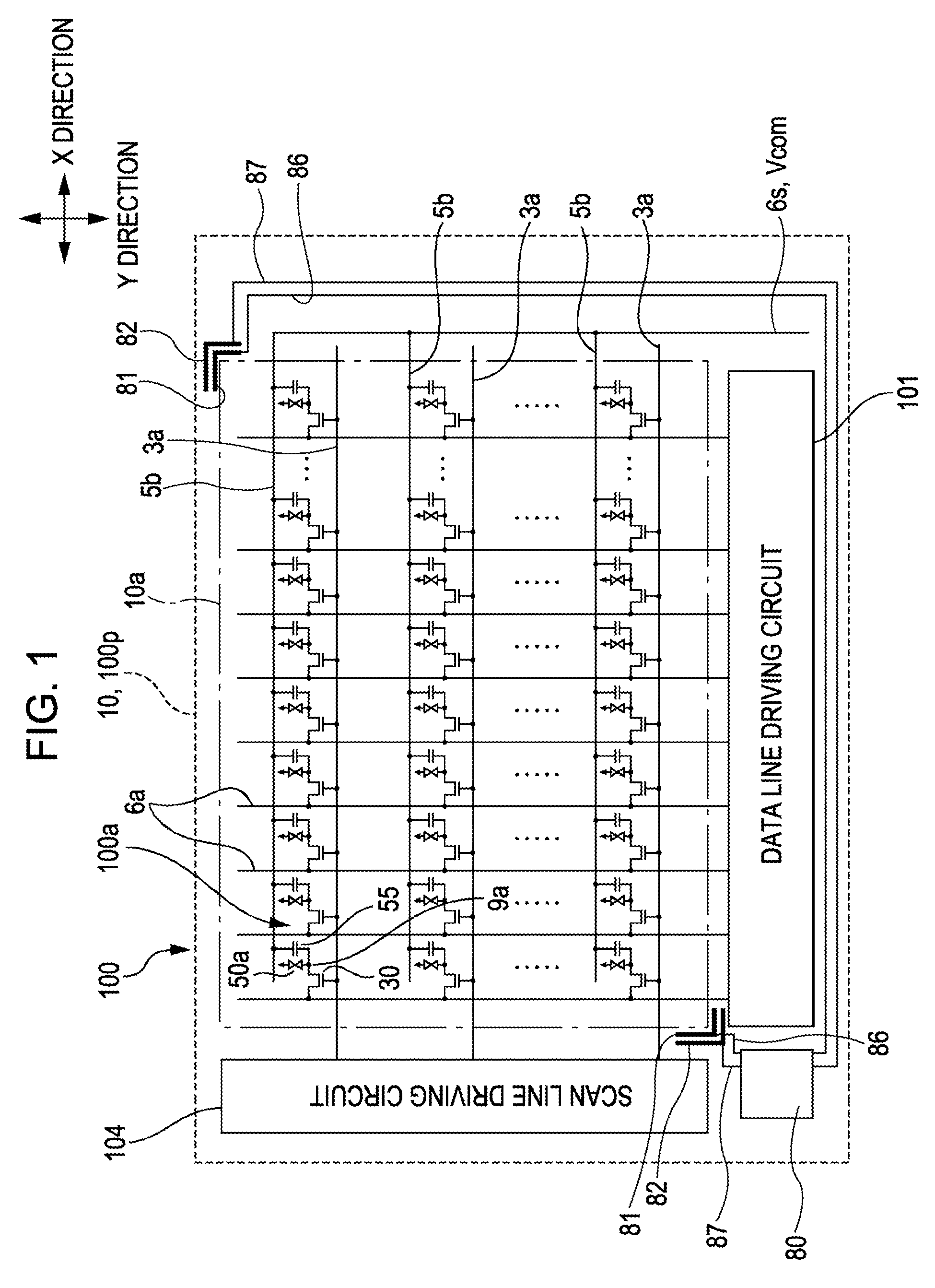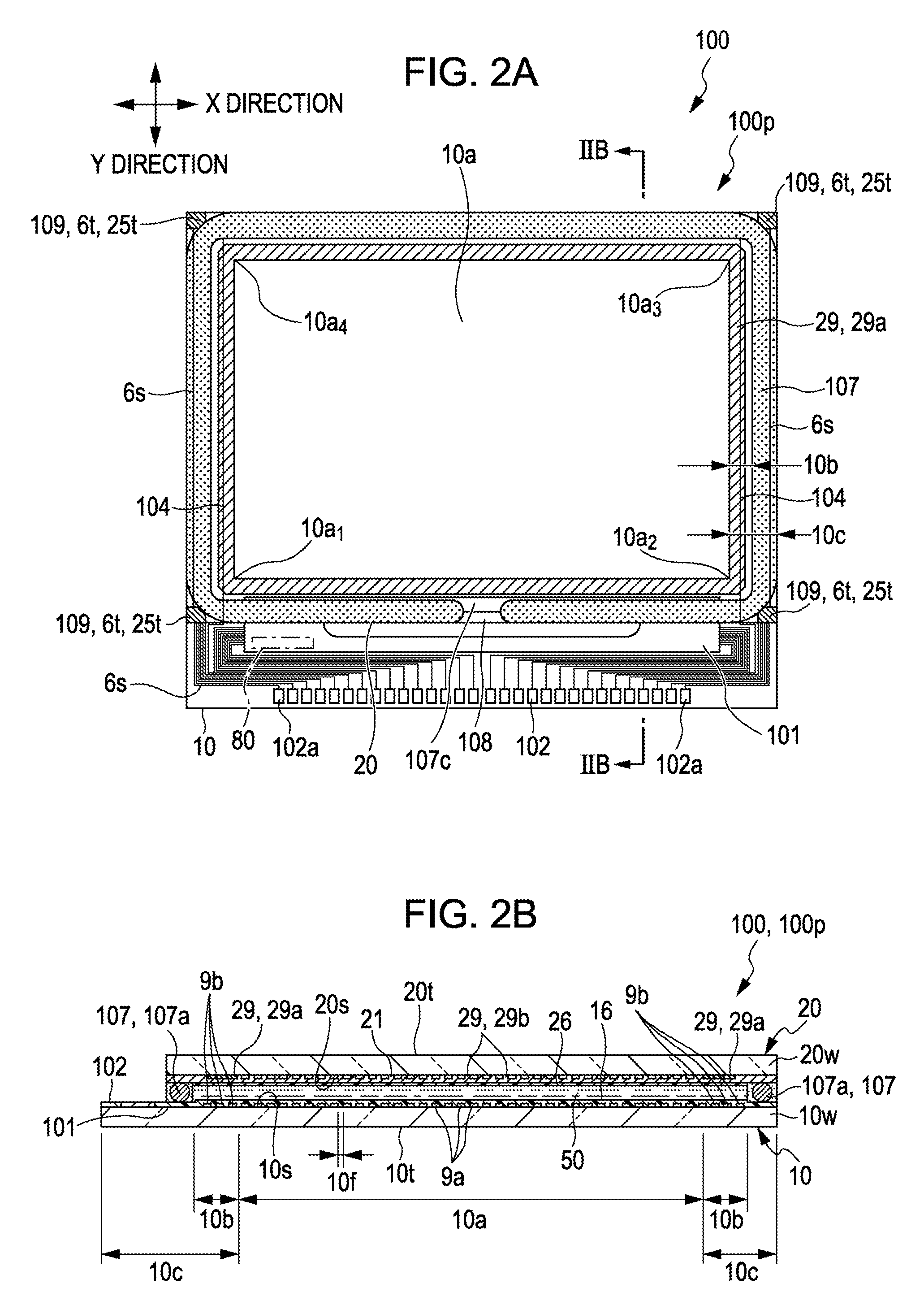Liquid crystal device, projection type display device, and electronic apparatus
- Summary
- Abstract
- Description
- Claims
- Application Information
AI Technical Summary
Benefits of technology
Problems solved by technology
Method used
Image
Examples
embodiment 1
[0037]In Embodiment 1 of the invention, first, a case when a first electrode and a second electrode are provided on the element substrate side will be described.
Electrical Configuration of Image Display Region and the Like
[0038]FIG. 1 is a block diagram that illustrates an electrical configuration of a liquid crystal device according to Embodiment 1 of the invention. Here, FIG. 1 is merely a block diagram that illustrates an electrical configuration, and does not illustrate wiring, the shape or the extending directions of the electrodes, the layout, or the like.
[0039]In FIG. 1, a liquid crystal device 100 includes a liquid crystal panel 100p of a TN (Twisted Nematic) mode or a VA (Vertical Alignment) mode, and the liquid crystal panel 100p includes an image display region 10a (pixel arrangement region, effective pixel region) in which a plurality of pixels 100a are arranged in a matrix form in the central region thereof. With the liquid crystal panel 100p, a plurality of data lines ...
second embodiment
[0114]FIG. 8 is an explanatory diagram of the electrodes and the like that are formed on a liquid crystal device 100 according to Embodiment 2 of the invention. Here, since the basic configuration of the embodiment is the same as Embodiment 1, the same symbols are given to common portions, and description thereof will be omitted.
[0115]While the third electrode 83 was configured as a portion of the common electrode 21 on the opposing substrate 20 in Embodiment 1, in the present embodiment, the third electrode 83 is configured as a separate electrode that is separated from the common electrode 21 as illustrated in FIG. 8. According to such a configuration, if the same potential is set for the third electrode 83 and the common electrode 21, the potential described with reference to FIGS. 6A to 6C may be supplied to each electrode. That is, the polarities on the element substrate 10 side and the opposing substrate 20 side during the first period T1 and the second period T2 are as below....
third embodiment
[0172]FIG. 9 is an explanatory diagram of the electrodes and the like that are formed on the element substrate 10 of a liquid crystal device 100 according to Embodiment 3 of the invention. Here, FIG. 9 is illustrated with a reduced number and the like of the pixel electrodes 9a. Further, since the basic configuration of the embodiment is the same as Embodiment 1, the same symbols are given to common portions, and description thereof will be omitted.
[0173]While one each of the first electrode 81 and the second electrode 82 were provided in the corners 10a1 and 10a3 in Embodiment 1, as illustrated in FIG. 9, a configuration in which each of the first electrode 81 and the second electrode 82 are alternately provided in a plurality from the image display region 10a toward the sealing material 107 may be adopted. Here, in FIG. 9, although a configuration in which two each of the first electrode 81 and the second electrode 82 are provided alternately from the image display region 10a towa...
PUM
 Login to View More
Login to View More Abstract
Description
Claims
Application Information
 Login to View More
Login to View More - R&D
- Intellectual Property
- Life Sciences
- Materials
- Tech Scout
- Unparalleled Data Quality
- Higher Quality Content
- 60% Fewer Hallucinations
Browse by: Latest US Patents, China's latest patents, Technical Efficacy Thesaurus, Application Domain, Technology Topic, Popular Technical Reports.
© 2025 PatSnap. All rights reserved.Legal|Privacy policy|Modern Slavery Act Transparency Statement|Sitemap|About US| Contact US: help@patsnap.com



